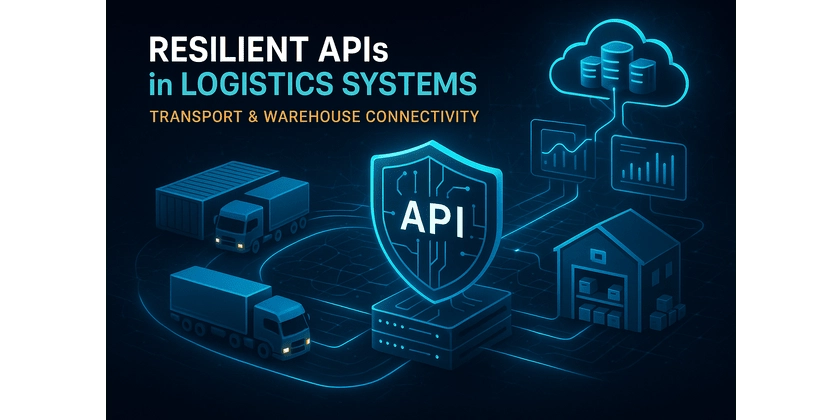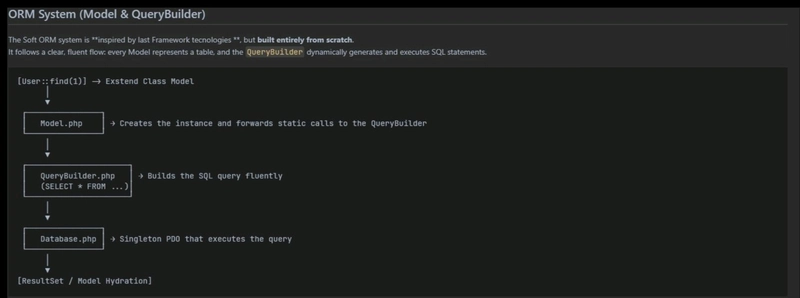In large-scale transport and warehouse management, every minute of downtime hits hard. If a hub’s transport management system API call fails, it affects every operation in the logistics. Thus leading to thousands of dollars slipping away every minute. One small glitch in warehouse management APIs can ripple across the entire network, and recovery isn’t instant.
What if every warehouse and transport hub stayed connected, no matter what failed behind the scenes? Resilient API design comes with real solutions through strong API architecture for logistics. It prevents minor system glitches from turning into costly network-wide downtime in large-scale transport and warehouse environments.
What Will Cover?
Why Do Logistics APIs Break?
Certainly, logistics faces this situation where their API ran flawlessly for eleven months, and then December hit, logistics faced a traffic surge. According to Queue, holiday season traffic grows by 12%. During peak load spikes, downtime begins to spread.
Under complex data dependencies, the pressure intensifies. Through small linked logistics services, all updates connect systems that track inventory, location, carriers, and order status. If a small failure occurs, the entire logistics system will be struck.
Without API scalability and strong API error handling, queues pile up, response times exceed the 200ms benchmark, and downtime spreads fast. That’s exactly where resilient API design and solid API architecture for logistics keep everything moving.
5 Core Principles For Resilient Logistics APIs
By following key principles, logistics teams can build resilient API design. This ensures that APIs supporting warehouse and transport management systems continue running smoothly even under high load.
Principle 1 – Idempotency First
Duplicate requests should always give the same result. This is crucial for warehouse management APIs, thus, they can’t risk shipping the same order twice. Implement unique request IDs and deduplication windows to handle retries safely.
For example: If the same delivery request is sent twice accidentally, the system allow one request. Thus, preventing extra shipping costs. Recommended timeouts ensure retries don’t overload queues.
Simple pseudocode:
If request.id not in processed_ids:
process(request)
processed_ids.add(request.id)
Principle 2 – Circuit Breakers and Fallbacks
Fail fast to prevent cascading failures across microservices for logistics. If a real-time inventory API fails, serve cached location data instead of blocking the workflow.
Without circuit breakers, one slow service can freeze an entire logistics system integration. Tools like Resilience4j, Hystrix, and Polly help implement these safeguards.
Principle 3 – Rate Limiting by Context
Not all requests are equal. Give higher priority to live tracking over bulk reports in fleet management APIs. Implement token buckets or priority queues to manage request flow efficiently. This keeps essential operations running smoothly during traffic spikes without overloading the system.
Principle 4 – Async Processing For Heavy Lifts
Some operations, like route optimization, can take a significant amount of time. Return a job ID immediately and process in the background, allowing the client to poll or receive updates via webhooks.
This approach ensures long-running tasks don’t block transport management system APIs or warehouse management APIs, maintaining smooth daily operations.
Principle 5 – Make Everything Observable
Monitory latency, error rate, and queue depths across all services. Trace shipments through numerous endpoints to set alerts before customers notice delays.
For instance: If the inventory API slows, monitoring should flag it before disrupting operations. Maintaining analysis helps achieve industry benchmarks of 99.9% uptime and minimizes costly downtime for logistics operations.
Common Failure Patterns
Most logistics API failures come from just a few common patterns. Knowing them early can save your operations from chaos. Here’s how to spot them.
-
The Thundering Herd: When a cache expires, thousands of simultaneous requests hit the database at once. This overwhelms warehouse management APIs, so that the entire logistics system integration slows down.
- Fix: Implement caching strategies and API scalability measures.
-
The Chattly API: A single order triggers dozens of calls across transport management system APIs and fleet management APIs, increasing latency and risk of failure.
- Fix: Consolidate requests and optimize microservices for logistics.
-
The Timeout Cascade: Service A waits for B, which waits for C. One slow service can block others in the API architecture for logistics.
- Fix: Add timeouts, retries, and robust API error handling.
Testing Strategies for Resilient Logistics APIs
It ensures smooth operations even during disruptions. By recreating real-world failures and traffic spikes, developers can spot weak points early. This helps them build APIs that bounce back quickly and keep logistics systems running smoothly.
Why Resilience Testing Matters in Logistics APIs
In logistics, where multiple microservices connect transport, warehouse, and carrier systems, even a brief API failure can ripple across operations. Resilience testing helps developers ensure APIs continue performing under pressure, from heavy shipment loads to delayed third-party responses.
Testing ensures recovery before problems ever reach production. In logistics, nothing keeps pausing, workflows continue even when carriers or warehouses slow down.
Core Testing Approaches
-
Load Testing checks how well logistics APIs handle peak operational demand. Tools like JMeter, Locust, and k6 simulate real traffic to detect performance issues early.
-
Stress testing pushes systems beyond their comfort zone. It helps uncover weak points and gives teams the insight they need to plan smarter scaling strategies.
-
Chaos testing intentionally breaks systems to test how well they recover from failures. Tools like Chaos Monkey or Gremlin help validate recovery behavior.
-
Failover Testing verifies that if one dependency fails, such as a warehouse inventory service, APIs reroute traffic or serve cached data instead of breaking workflows.
Automating Resilience Tests in CI/CD
Integrate these resilience tests into CI/CD pipelines to detect failures early in development. Use observability logs, metrics, and alerts to capture latency, error spikes, and retry patterns during testing. Benchmark performance against your internal uptime and response goals, ensuring APIs remain steady under real-world logistics conditions.
Tools and Getting Started
API Gateway
- Kong (free/open-source) or AWS API Gateway: Manage transport management system APIs and warehouse management APIs efficiently.
- Beginner tips: Start with one gateway to simplify API architecture for logistics.
Circuit Breaker
- Resilience4j (Java) or Polly (.NET): Improves API error handling in microservices for logistics.
- Beginner tips: Start with one service to implement circuit breaking and fallback logic safely.
Rate Limiting
- Redis + custom logic or Cloudflare: Protect real-time inventory APIs and fleet management APIs.
- Beginner tips: Use token buckets or priority queues to throttle requests without blocking essential operations.
Monitoring
- Prometheus + Grafana (open-source) or Datadog/New Relic: Ensures smooth logistics system integration and API scalability.
- Beginner tips: Begin by monitoring key endpoints like inventory and shipment tracking APIs for latency and errors.
Conclusion
Resilient API design helps logistics software maintain smooth operations across transport, warehouse, and fleet management systems. As logistics scales, resilience becomes essential.
Strengthening API architecture for logistics, including APIs that power transport and warehouse management systems, ensures reliable communication between services and supports overall business continuity.



